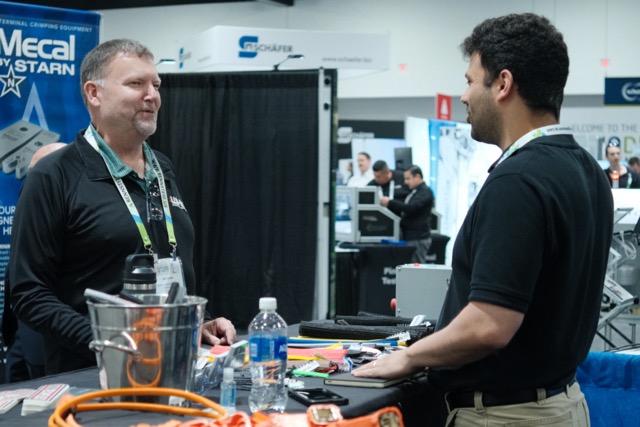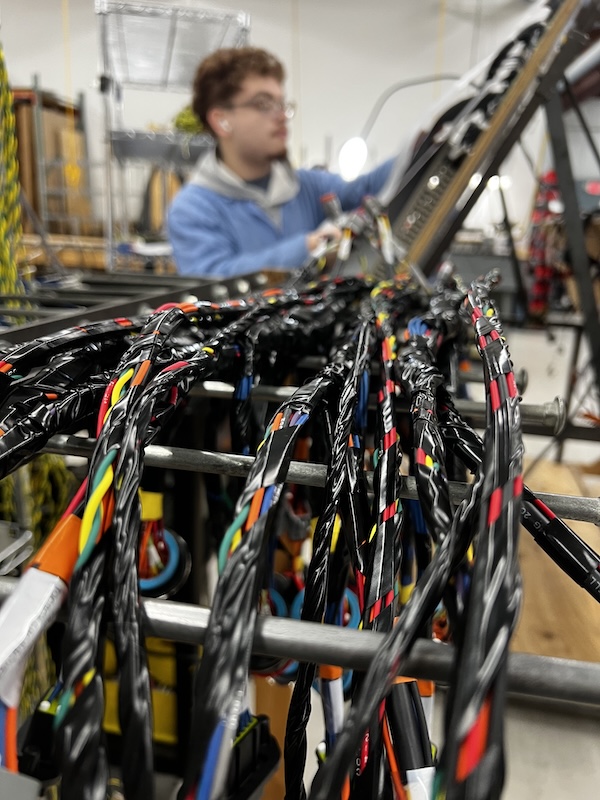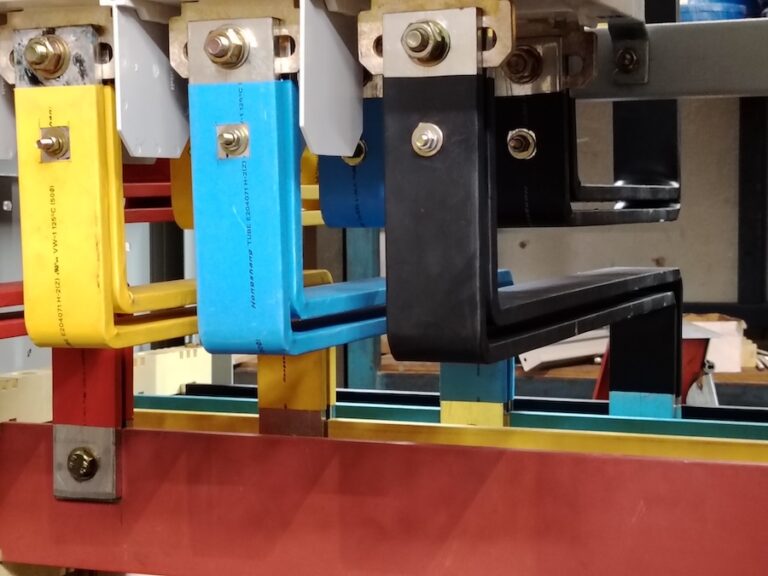When the pandemic hit in 2020, DIT-MCO International—a leading designer and manufacturer of electrical wiring test equipment—vowed to make NETS programming and operation training easily accessible for their customers. Next Generation Electrical Test Suite (NETS) is DIT-MCO’s software for test script creation and execution. Prior to COVID-19, a NETS programming and operation class could only be taught with a live, face-to-face instructor at DIT-MCO’s Kansas City, MO facility. The pandemic forced everyone to rethink how business was done, and DIT-MCO was no different.
Traveling for business and pleasure was almost non-existent, but the need for training did not go away. Being a manufacturer on the governments “essential business” list, the doors of the operation were able to remain open, and with a great team, they were able to safely continue manufacturing wiring harness test systems. However, the doors to visitors were closed. This affected all of DIT-MCO’s customers, especially the ones who needed NETS training as classes are regularly held throughout the year. Rather than asking for customers to risk their safety, the technical training specialist, Danny Roth, and his team went to work creating a solution to meet the training restraints.
What is the solution?
E-Learn NETS 460 training and Virtual Instructor-Led Training (VILT).
What is the difference?
E-Learning NETS Training
While they are both completed online from the comfort of the customer’s home or office, there is a difference. E-Learn NETS training is a pre-recorded, self-paced learning method where the instructor is not live or immediately available. The class breaks NETS down by topic and goes through modules that can be paused, rewound, and restarted. You can complete this form of training over the course of 10 days. All questions about the NETS course are answered by the trainer via email or phone call.
Virtual Instructor-Led Training (VILT)
VILT is a live training class with an instructor who is teaching a class full of students. The difference is that VILT is completed virtually in an online meeting format. A live instructor gives students the opportunity to interact and ask questions as they arise. Throughout the course, there are a number of class exercises. VILT makes it easy to not only complete these assignments, but it also allows for the ability to ask questions in real time. Students can take this class from the comfort of their work or home office.
Even as the pandemic continues, concerns for safety remain at an all-time high. Traveling to Kansas City to DIT-MCO’s facility presented a challenge that some customers did not want to face. DIT-MCO quickly sprang into action and offered two alternate options to meet training needs. This kept people out of airports and away from other students.
An important aspect of having alternate training options is convenience. Apart from safety, DIT-MCO created training options that can be used long after the pandemic is over. VILT NETS Training and E-Learn NETS Training eliminate travel time and costs, along with keeping people available for their own company. A live, in-person NETS training class runs for four days, Tuesday through Friday. Depending on the location of customers, this often involves two travel days, along with four to five days in a hotel room. VILT is designed to reduce that stress. Gone are the costs for flights, rental cars, and hotels. In addition, the student eliminates all of the hours spent traveling.
DIT-MCO knows how important it is for customers to have all of their employees available. Having an alternate option for training gives customers that same sense of comfort. This is especially true in the case of an emergency. No one expects or wants a crisis to happen, but the reality is an emergency can occur at any time. Keeping employees in their office and available for immediate communication can be the difference between an emergency being resolved versus it causing further issues.
Effectiveness and Engagement
However, in order for VILT to be a success for both DIT-MCO and the students taking the class, students need to fully understand NETS when they complete their training. Danny Roth, technical training specialist, said this about VILT’s effectiveness, “It can be just as effective as physically being here. I’ve found it often depends on the environment of the students. Are there distractions from their surroundings? Are they being interrupted by co-workers or if working from home, small children? If the students are able to limit these distractions and remain engaged, VILT is an excellent alternative to attending a physical class. If there’s a high likelihood of external distractions and interruptions, then the cost and time spent attending physically is well worth it.”
In order to have an effective VILT training class, the students need to be engaged. Without being face to face, it can be a challenge to know if the students are engaged. That is a challenge that the trainer must overcome. DIT-MCO’s trainer often has a classroom full of face-to-face students, plus a screen full of virtual students. He offered some advice on ensuring full engagement for the virtual students that trainers can’t see: “The best advice I would give to anyone transitioning to VILT is to always remember your virtual students are there with you. Learn their names and ask direct questions, not just “Are there any questions?” Give time to formulate an answer. Take 10 to 15 minute breaks after every hour or so of instruction. Remember, the students are likely sitting at a desk in front of a computer or laptop watching your presentations and listening to you. Give everyone time to stretch and move around a bit, grab a drink or snack, etc.” An important aspect of being engaged in a class is the answering and asking of questions. This lets the trainer know that the student is paying attention and is engaged in learning the material. “Start the virtual meeting a few minutes early and stay online after the scheduled end of day for any student that may have questions they don’t feel comfortable asking with everyone else listening,” said Roth.
During an in-person or virtual class, a useful technique to create engagement and begin the training process is to give students programming assignments. Programming assignments allow students the chance to showcase what they have learned throughout the course and write custom test scripts. Whether the student is in person or virtual, each student’s script is submitted and run on a DIT-MCO analyzer by the trainer. These assignments allow the trainer to measure student progress in learning NETS and allow for helpful discussions if there are any issues with the assignment. Showing each student’s test script in front of the class allows the instructor to illustrate different ways to complete the assignment. Students are only given a schematic diagram and a wire list, and they are told to create a test script from scratch. Due to companies taking a different approach to testing, no two test scripts are the same. It can act as a confidence boost for the student to see their script run successfully on a DIT-MCO analyzer. Following the training class, they remain confident that they will be able to write test scripts for their company’s product as well.
Challenges
Even with all of the hard work of the DIT-MCO team, it did not come without hurdles. It was an adjustment to all who were involved, students and the trainer. Roth explained, “The biggest challenge with hosting a four-day VILT course is time zones. The first VILT class we held had students from four different time zones. Students on the East Coast started their day a little later than they normally would while those on the West Coast started a bit earlier. To go along with this, we had to schedule lunch at a time that would accommodate everyone.” Other than logistical challenges, DIT-MCO’s facility classroom wasn’t fully equipped to handle VILT classes. The AV equipment was lacking what it needed to effectively teach students through video conferencing. In order to change that, DIT-MCO bought all new video equipment. Luckily, they had recently bought an interactive touch monitor for in-person training, and the model also worked well with virtual students. It accommodated easy screen-sharing over video conferencing, all while allowing the digital pen to be used for writing on the presentation.
Conclusion
When it came to training, DIT-MCO had one goal in mind: give customers more options to become fully trained on NETS software. While met with challenges along the way, DIT-MCO’s training should be more polished and well-rounded to meet everyone’s needs moving forward in 2022. With a full year of e-learning and VILT training, DIT-MCO’s training staff is more experienced and prepared. While there will always be a learning curve adjusting to the virtual world, DIT-MCO feels confident that their best years of training are ahead of them. Going forward, NETS training will remain easily accessible for all of their customers.




















































